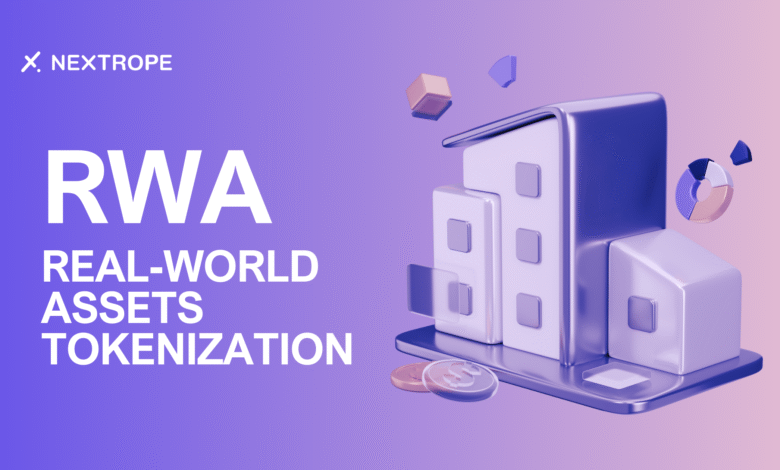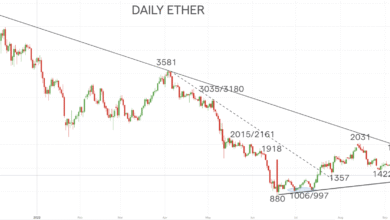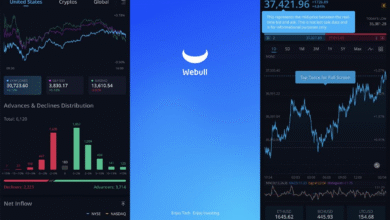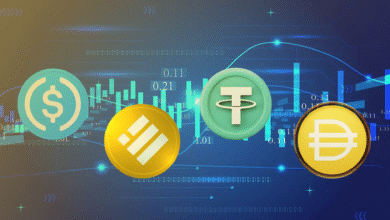Real-World Assets Surge: Market Reaches $25 Billion Milestone

Real-world assets (RWAs) have emerged as a groundbreaking innovation within the financial sector, surpassing the remarkable $25 billion threshold this week. This new dimension of investing not only includes tokenized real-world assets but also highlights a surge in the number of asset holders, which increased by over 72% in just 30 days, reaching 293,006. Leading the charge in the RWA market growth is the private credit blockchain sector, boasting an impressive $14.73 billion invested in verified offerings. Top players, including Figure and Maple, are redefining the investment landscape by leveraging asset tokenization. With projections recommending a future market size in the trillions, the evolution of financial investments through RWAs is undeniably an area to watch closely.
The concept of real-world assets can also be referred to as tangible assets or physical properties that can be digitized and traded on blockchain networks. This innovation includes various asset types such as tokenized commodities and private debt instruments, all contributing to the expanding RWA market. The rise of blockchain technology has enabled a more efficient method of transferring and securing ownership of these traditional assets, which has attracted both institutional and individual investors alike. Given the rapid advancements in asset tokenization, the interest in private credit blockchain has significantly increased, providing new opportunities for diversification in financial portfolios. As the landscape of financial investments continues to evolve, these assets are set to play a crucial role in the future of trading and liquidity.
Overview of Real-World Assets (RWAs)
The recent surge in the real-world asset (RWA) sector has caught the attention of both investors and financial analysts, with the market now exceeding $25 billion. This dramatic growth, driven by an increase of over 72% in asset holders, marks a pivotal moment in the evolution of finance. Real-world assets encompass a variety of tangible assets that can be tokenized, allowing for fractional ownership, enhanced liquidity, and increased participation in the market. As the RWA market matures, innovative technologies such as blockchain are paving the way for more secure and efficient asset management.
Notably, tokenized real-world assets provide an avenue for traditional investors to diversify their portfolios. By leveraging on-chain verification, investors can securely transfer ownership of these assets, reducing the risk of fraud and inefficiencies often associated with traditional asset trading. This shift towards modernizing asset ownership is propelling the RWA market toward unprecedented heights.
The Role of Asset Tokenization in RWA Growth
Asset tokenization has revolutionized the way real-world assets are approached in the financial sector. By converting physical assets into digital tokens, the RWA market can offer unprecedented levels of transparency and accessibility. Not only does this process enable fractional ownership for smaller investors, but it also enhances liquidity, allowing assets to be traded more freely. In fact, the private credit blockchain segment has seen remarkable gains, with on-chain investments reaching $14.73 billion.
Moreover, the increase in tokenized real-world assets illustrates a growing trend in financial investments worldwide. Tokenization empowers a broader audience to engage in previously exclusive markets, effectively democratizing investment opportunities. As established firms like Figure and Tradable lead this charge, we can expect asset tokenization to solidify its place as a fundamental component of the RWA landscape.
Private Credit Blockchain: Leading the RWA Market
In the evolving ecosystem of real-world assets, private credit blockchain has emerged as a significant frontrunner. With a staggering $14.73 billion directed towards blockchain-verified private credit offerings, this sector showcases the dynamic integration of financial technology with traditional lending practices. Companies like Figure and Maple have demonstrated the potential of this approach, capturing substantial investments that underscore investor confidence in the transformative power of blockchain.
This innovative market segment not only thrives on the advantages of tokenization but also enhances the efficacy of credit assessments and transaction processing. By utilizing blockchain technology for private credit, stakeholders can glean increased insights into borrower behavior, leading to more informed lending decisions and reducing risks associated with credit extension. The trajectory of private credit in the RWA market reveals a promising future, characterized by greater trust and transparency.
Market Outlook: RWA Sector Projections
The future for the real-world asset market looks exceptionally bright, with various financial institutions providing optimistic projections. McKinsey estimates that the RWA sector could reach a valuation of $2 trillion, while the Boston Consulting Group envisions a staggering leap to $16 trillion by 2030. This growth trajectory indicates a collective belief in the disruptive potential of RWAs and their integration into mainstream finance.
As the market matures, industry stakeholders are urged to strategize on harnessing the full potential of real-world assets. With continued innovation in asset tokenization methods and growing acceptance of blockchain technology, investment landscapes will likely undergo significant changes. Adapting to these shifts can provide businesses and investors alike with remarkable opportunities for engagement and profitability.
Tokenized Treasury Funds: The Second Largest Asset Class
Tokenized Treasury funds currently hold a prominent position in the RWA sector, accumulating an impressive market value of $7.53 billion. This status positions these assets as the second-largest segment within the real-world asset category, reflecting a growing trust in tokenized government securities. Companies like Blackrock’s BUIDL, which alone boasts over $2.82 billion in on-chain Treasury funds, exemplify this trend.
The increase of 1.96% over the last week signals robust confidence in the liquidity and security that tokenized Treasury investments offer. As financial institutions continue to explore and invest in this area, the implications for traditional asset management are profound. The movement towards tokenized real-world assets underscores an evolving landscape in finance where digital and traditional investments coexist and thrive.
Tokenized Commodities: The Third Position in the RWA Market
Following Treasuries, tokenized commodities have carved out a significant niche within the real-world assets market, currently valued at $1.61 billion. This sector is predominantly driven by gold-backed tokens like PAXG from Paxos and XAUT from Tether, contributing to the rising interest in precious metals as secure investment options. As global economic uncertainties continue to rise, tokenized commodities provide a hedge and safe haven for investors.
The success of tokenized commodities highlights the importance of asset diversification in achieving financial stability. With the ability to trade these digital tokens seamlessly on blockchain platforms, investors can access commodities without the burdens of traditional ownership logistics. This increased flexibility is likely to attract a wider range of investors seeking to stabilize their portfolios amidst market volatility.
The Impact of Increasing Asset Holders on the RWA Market
The recent 72% surge in the number of asset holders, now totaling 293,006, is indicative of a rapidly expanding interest in real-world assets. This influx represents not only seasoned investors but also newcomers drawn by the innovative possibilities of asset tokenization. The rise in participation is reshaping the landscape, fostering a more dynamic market environment that encourages growth and innovation.
As more individuals gain access to tokenized assets, the potential for market expansion grows. Increased asset holders signify greater demand, fueling further investment in diverse real-world assets and enhancing market liquidity. This momentum will likely continue as educational initiatives and technological advancements make investing in RWAs more accessible.
Integration of Technology in Real-World Asset Investments
Technology plays a crucial role in the burgeoning real-world asset market, particularly through advancements in blockchain and asset tokenization. The ability to communicate securely and transparently among parties is revolutionizing traditional investment methodologies. By utilizing smart contracts and decentralized finance platforms, investors can engage with RWAs in ways that were previously unfeasible.
This technological revolution not only streamlines investment processes but also encourages a broader audience to participate in the financial market. With platforms that facilitate easy access to tokenized investments, individuals can diversify their portfolios and benefit from the booming RWA sector. As technology continues to advance, its integration will remain a driving force behind the projected growth of real-world assets.
Investor Confidence in the RWA Market
Investor confidence is a critical driving factor in the ongoing expansion of the real-world asset market. As market valuations soar and new players enter, financial institutions and individual investors are increasingly recognizing the potential of RWAs. This newfound confidence is reflected in the substantial capital allocated towards private credit blockchain initiatives and tokenized asset classes.
Building trust within the RWA ecosystem is paramount, as it reassures investors of the security and reliability of their investments. Enhanced regulatory clarity and the rise of reputable asset tokenization platforms are essential in fostering this confidence. A positive sentiment within the market reinforces growth prospects, ultimately leading to an amplified interest in real-world assets as viable financial investments.
Educating Investors on Real-World Assets and Tokenization
As the real-world asset market continues to expand, educating investors on asset tokenization and associated benefits is critical for sustaining growth. Financial literacy surrounding these concepts fosters a deeper understanding of how tokenization can democratize access to previously illiquid and inaccessible assets. Engaging educational initiatives can aid in bridging the knowledge gap and building a broader investor base.
As potential investors learn about the advantages of tokenized real-world assets, such as reduced barriers to entry and enhanced liquidity, they are more likely to embrace this evolving market. By promoting awareness and understanding, the RWA sector can attract a diverse group of investors, paving the way for a robust and continuously expanding landscape.
Frequently Asked Questions
What are real-world assets (RWAs) and how are they impacting financial investments?
Real-world assets (RWAs) are tangible and tradable assets that have intrinsic value, such as real estate, commodities, or bonds. The tokenization of these assets allows for easier trade and access through blockchain technology, thereby enhancing financial investments. This innovative approach is poised to significantly transform traditional investment methods.
How is the RWA market growth affecting the future of asset tokenization?
The recent growth in the RWA market, surpassing $25 billion, highlights a robust trend towards asset tokenization. This process provides a means to fractionalize ownership and improve liquidity, suggesting a future where asset tokenization becomes the norm for diversifying financial investments.
What role does private credit blockchain play in the tokenized real-world assets market?
Private credit blockchain is a crucial segment of the tokenized real-world assets market, currently leading in on-chain value with over $14.73 billion. By facilitating blockchain-verified offerings, it provides transparency and efficiency in lending, thus propelling the growth of RWAs.
What are the key drivers behind the significant value increase of tokenized real-world assets?
The increase in value of tokenized real-world assets is driven by innovations in asset tokenization, the demand for liquidity in traditional markets, and the accessibility provided by private credit blockchain. Recent trends indicate a surge in total asset holders and investment activity, contributing to this upward trajectory.
How does the market for tokenized commodities compare to that of tokenized Treasury funds in the RWA sector?
Tokenized commodities, valued at $1.61 billion, trail behind tokenized Treasury funds, which stand at approximately $7.53 billion. Despite current market conditions, both segments are integral parts of the RWA sector’s expansion and illustrate the diverse opportunities within asset tokenization.
What are the future projections for the RWA market and its impact on financial investments?
Future projections for the RWA market are optimistic, with estimates ranging from $2 trillion to as high as $16 trillion by 2030. This anticipated growth is likely to drive further innovations in asset tokenization and private credit blockchain, transforming financial investments considerably.
| Key Points |
|---|
| The real-world asset (RWA) sector surpassed the $25 billion mark, marking a significant milestone in finance. |
| Total number of asset holders increased to 293,006, a 72% rise in just 30 days. |
| Tokenized RWAs value is $25 billion, with a 7.23% increase since June 10, 2025. |
| Private credit leads the RWA category with $14.73 billion invested, primarily through firms such as Figure, Tradable, and Maple. |
| Figure has reported a cumulative total of $13.6 billion in on-chain loans. |
| Tokenized U.S. Treasury debt amounts to $7.53 billion, showing a 1.96% increase in the last week. |
| Blackrock’s BUIDL leads with $2.82 billion in tokenized Treasury offerings. |
| Tokenized commodities, primarily gold-backed tokens, hold a market cap of $1.61 billion. |
| Market growth suggests potential expansion to between $2 trillion and $16 trillion by 2030 according to various projections from financial institutions. |
Summary
Real-world assets (RWAs) have captured significant attention in the financial sector, surpassing the $25 billion milestone and showing extraordinary growth in both value and the number of holders. With the RWA market poised for explosive expansion, forecasts from reputable institutions suggest it could reach upwards of $16 trillion by 2030. This highlights the growing importance of RWAs in modern finance, as they create new opportunities and strategies for investment.




